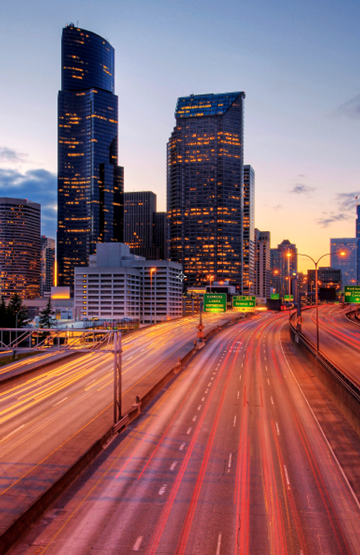 Read the peer reviews for this feature
Read the peer reviews for this feature
There are a host of new and emerging ideas around how different tomorrow’s solutions will be from those we know today.
This article looks at the developments from a number of perspectives, to assess the degree to which planners, operators and infrastructure builders need to adapt to these changes. It will also assess how different technologies will affect infrastructure and the needs of the customer in both public transport and individual private transport.
The conclusion is that perhaps the more ‘traditional’ railway solutions are still fit for purpose as part of the overall changing transport mix - and as a consequence, planners and infrastructure companies should continue building new systems, rather than put everything on hold.
AUTONOMOUS VEHICLE REVOLUTION
The Sunday Times reported recently that Google and Uber attended the ‘industry day’ for potential bidders for operations contracts for the HS2 line.
We have all read about, watched and listened with increasing interest to the various and rapid developments in autonomous vehicles and autonomous transport. Most of the new protagonists come at this from a data perspective, and can all make legitimate claims that they are ‘the future’ of transport - or anything else for that matter - as the ‘internet of things’ is upon us.
Their data analysis is so comprehensive that they can understand future customer requirements far better than most operators. These new players are unquestionably in a position to provide individualised autonomous transport solutions, and meet individual needs in a way that is simply not possible for more traditional transport operators.
Vehicle manufacturers will be producing these autonomous vehicles - and they will increasingly meet these individual needs by selling ‘transport services’ rather than the cars themselves. It is a natural extension of the leasing package - do not sell the car itself, sell the finance package to own it. And by extension, do not sell the finance package to own it, sell the finance package to use it.
Just like mobile phones, the cost of the asset becomes wrapped up in your usage charge each month. And just like the mobile phone market, you do not have to be a phone manufacturer or a network operator to be part of that game. So you may well buy your car (or rather your road transport services) from Google or Uber or BMW, or from any number of finance companies that act as brokers in between.
But for a moment, let us put future data aside and consider our current reality and our existing infrastructure.
An individualised set of transport services pre-supposes that there is common infrastructure available to all users. But the key question for transport and city planners is: ‘How different will that infrastructure need to be?’
Cars are currently being created to fit the existing infrastructure - rather than vice-versa. We can therefore assume that (at least for a while) the new cars will use the same basic road infrastructure, which is not likely to radically change.
However, it also seems likely that at a more detailed technical level - like kerb design, central barrier design, pedestrian crossing designs - things may need to change. These details may or may not trouble macro-planners too much.
TRAFFIC CONTROL SYSTEMS
The new autonomous traffic will inevitably, at some point, have to lead to new operating systems and user-codes for the roads. Given the number of users that will need to conform to a new set of operating rules, the more fundamental changes are likely to be needed in the control and traffic management systems - this is a potentially huge task.
While shared and common user infrastructure still needs to be built the same way, the traffic management signalling of it may need to change radically to accommodate existing vehicles as well as the new autonomous ones. It may be as simple as ‘designated lanes’ versus ‘shared lanes’, but revisions to traffic lights, changes in priorities, and changes in junction operation are likely to be just one step behind that.
So how long will the period of ‘mixed use’ be? How many years before all vehicles are autonomous?
History tells us that there is likely to be a very long transition indeed. To fundamentally change the signalling system of roads assuming autonomous-only vehicles will likely be an even longer process than it is for railways. Roads are not a closed and planned operating system like the railways, they represent an open, multi-user free-for-all that makes a complete traffic management change even more complex.
There is no doubt that systems, navigation, telecoms and technology providers will be busy producing many new products and gizmos for customers to use to overcome these obstacles. But the rate of introduction is also dependent on many human factors, not just their technical veracity.
This technology shift to ‘new’ safe guidance systems on shared and common user infrastructure has a parallel with the same process that has occurred on the railways. For over 100 years we had mechanical signals trackside. Alongside them we progressively introduced coloured lights. And now we have the progressive movement to individual guidance systems ‘on train’ as opposed to on the trackside.
The railways are a planned, controlled operating system - yet it will take around 30 to 50 years to reach a point where the lights on sticks will no longer be needed. We can safely assume there will be a similar long period of mixed autonomous and driver-driven vehicles using the roads together, causing a long overlap in guidance systems.
So the long ‘mixed-use’ period, along with the existing love affair with ‘my car’, would suggest that a very quick and urgent change to the infrastructure seems unlikely.
INFRASTRUCTURE AND CITY DYNAMICS
In the meantime, we are lumbering on - planning cities, planning public transport, building railways, trying to make them work and worrying about improving the passenger experience, and all the other things that public transport planners and operators do. Are we wasting our time? Do these autonomous vehicles mean that transport delivery and the shape of cities need to change?
The railways were in decline for many years in the late 20th century, but the past 20 years has been a period of renewed growth globally. So do these new technologies mean that there could be another period of decline?
Cities, at their centre, tend to be remarkably resilient organisms that maintain their shape. Most cities in Europe have grown up over the last 1,000 years or so and have a pretty well established footprint - never mind how inconveniently placed St Paul’s Cathedral is in London, it’s not going to be moved to one side for a new transport system. In North America, the most established cities may be ‘only’ 200 years old, but at their centre they have a character and a use of space that is their own. All these cities have evolved along with their transport, and changed as the dominant transport changed.
Transport is an integral part of the city map, but the fact is that the transport systems of all cities adapt and evolve around and under the city - the transport rarely changes fundamentally the shape of the city centre itself. This is truer today than it was even 40 years ago - the aesthetic value of certain views and certain buildings, the ‘look and feel’, is of even greater importance in planning now than it was 40 to 50 years ago.
Taking more space for any new transport system is rarely aesthetically comfortable, and there is also a fundamental economic driver - land prices. Transportation infrastructure cannot take up too much prime real estate in a city centre, it has to be built either underground (where the huge cost of earth movement is still cheaper than space at the surface), outside the city, or adapt to the buildings and infrastructure that is already there.
As a result, occasionally things ‘break out of the box’, such as the creation of a very modern, new centre such as Docklands, a few miles to the east of the City of London. The financial centre moved a few miles because of land and development prices.
In the 1980s and 1990s this ‘new’ site also had a new bespoke transport infrastructure built for it - Docklands Light Railway. The DLR is a classic light rail transit system, as is the Canada Line in Vancouver or the Confederation Line in Ottawa. These are standalone, self-contained systems, primarily (but not exclusively) above ground, with driverless automatic trains, operated in fixed formations from a single control centre.
If we made a city development like Docklands again, would we build a similar system again? What would change? These are important questions if you are a decision-maker about to spend billions on upgrading your existing transport system.
THE NEED FOR MASS TRANSIT
The dynamics around public transport are very different to the private autonomous vehicles and personalised transport. While the latter may be the way forward at an individual customer level, for mass transit public transport is growing - for environmental, population growth, sustainability and economic reasons. The needs of a growing urban population cannot be met exclusively by individual transport modes, regardless of technology. Shared public transport will continue to be required wherever significant capacity requirements exist.
But does the public transport system need to be an isolated and standalone network?
The first assumption must be no. Autonomous vehicles ought to allow for more flexible ‘on or off-route’ movement. But we have that now with buses and bus systems on the roads - if we divert everything back onto the road system (albeit with enhanced traffic management) we will rapidly run out of space and capacity.
The fact is that public mass transit systems are able to provide the capacity that individual road vehicles cannot. Trains of any type and description have the advantage of housing a significant concentration of people onto a smaller number of moving parts. It is also very easy to conclude that even with new technology systems, public transport systems work best - with most capacity, most reliability and most safety - if operated as an isolated system (a railway).
Given that DLR and the Canada Line are automated and driverless trains, they already display many of the characteristics that the new technologies are striving for - but in a mass transit context rather than private transport. But there is one fundamental bit of ‘old thinking’ still required, and that is ‘rails’. Why tie yourself down with rails?
Here, the same arguments apply - capacity, speed and efficiency. If you are going to shift a lot of people quickly and frequently over a specified route (which sounds suspiciously like the definition of mass transit), then use rails. It is more energy-efficient and requires a lot less traction effort.
It is why the guys trying to get coal out of the pits and down to the docks put their wagons on rails to start with - it was a lot easier than putting it into individual wagons pulled by horses. The basic rules of physics still apply, never mind how good the IT is.
What is missing from this analysis is the key and fundamental decision-making ingredient… people. People will ultimately choose what works for them. Interestingly, after more than 100 years of parallel running, we still have cars AND trains, because they serve different purposes - people choose what they want, when they want it.
So what does all that tell us? Well, generally: that cities will not be messed with; that rail systems still have value; that aesthetics and property values in cities mean that buildings and people come first; and that transport infrastructure is a necessary evil that has to fit in somehow - like sewers.
But like sewers, transport systems for both private and public use are essential to economic growth. Transport therefore has to fit with the existing spaces and has to adapt. The ‘new technologies’ are fantastically adaptable and flexible, so that is what they will do - the cities came first, and they will shape transport development rather than vice-versa. People will be happy with that.
INTERCHANGE AT STATIONS
But away from the city centre, out in the suburbs, it may be a different story.
One can very easily see that the design of railway stations taking people to the city centres may need to be re-thought in terms of the new way of ‘individualised’ travel demand.
Why have large car parks at stations if everyone is going to turn up in an automated vehicle that drives itself home again? The technology already exists whereby your car (if you have one) could drive you to your local station, drop you off, drive itself away either to your own garage or back into ‘the pool’, and then turn up again to collect you when you return. Your phone app will know exactly where you are, so you will not need to let your car know when to leave to collect you.
So does that mean a different road system or a different rail system? No. But a different interchange? Potentially, yes.
HYPERLOOP AND MAGLEV
However, this all pre-supposes that there is not a huge and fundamental shift in the technology. We have been describing transport using ‘wheels on the ground’, but we have other options such as Hyperloop and Maglev (Magnetic Levitation).
If we were to develop transport systems based on suction through tubes, as per the Hyperloop system envisaged by Elon Musk, this would create a very different infrastructure. There are already inter-urban and intra-urban feasibility and development studies being undertaken in Dubai and in Slovakia.
It is a truly exciting development, but it would not be the first much-heralded technology that took a long time to make real progress. For example, in the 1980s British Rail opened a magnetic levitation train link in Birmingham. It was a great exercise, but the Maglev was plagued by reliability problems for all its life before being converted into a much lower-tech option about 15 years later.
Maglevs also exist in other locations, and a number of long-distance high-speed versions are planned and being constructed in Japan with operation due in ten years. But the trouble with revolutionary technology is that it takes a very long period of ‘real operation’ to actually learn the true reliability and the true costs of the operation.
It is unclear how long it will be before the reliability needed for public transit becomes an economic achievement for Hyperloop or for high-speed Maglev. History tells us to expect a long period of parallel development, just like cars and trains (and horses), and there is likely to be several years of building, development and then operation to really understand the dynamics, economics and reliability - and their true potential.
Therefore, it looks as if we can keep building railways safely for at least the next 40 or 50 years without thinking we are wasting our time. High volume, peak capacity movement of people in urban settings is still very much the railway’s USP. City planners responsible for planning public transport for cities need not change step at the moment.

Richard George makes a sound case for continued investment in rail, and specifically infrastructure, and that autonomous vehicles are some way into the future. While he will probably be proved right - that mass transport by rail is the only feasible means to move large volumes of people around congested cities and for speedy medium-distance journeys - there are reasons to question whether we need to recalibrate some of our assumptions.
First, we are not innovating fast enough, and are potentially implementing solutions that are already out of date. Second, employment and travel patterns are changing. Third, we are not doing enough to successfully integrate transport modes - all of which could contribute to significant changes in demand for rail transport.
Train control systems over the past two centuries have evolved from ‘Bobbies’ walking in front of engines with flags on sticks, to time interval working, to Absolute Block with mechanical signals on posts, to colour light Track Circuit Block - all of which limit capacity to fixed lengths of track. New traffic management control systems can potentially increase capacity, as a train can proceed providing a proximity gap is maintained with the train ahead.
The problem is buying the right technical solution that is affordable. This is likely to mean replacing kit as it becomes due for renewal and overlaying it on existing block signalling, thereby missing out on the benefit of providing more capacity. Failure to provide the necessary capacity and address chronic overcrowding at certain times will cause the public to rethink ways of doing business and avoid rail travel.
For the past decade or more passenger growth has comfortably outperformed forecasts as employment in large towns and cities, particularly in London and the South East, has continued to grow and as services on rural routes have been stepped up to make leisure journeys feasible once more.
However, despite the relatively positive economic conditions, the rail industry’s revenue growth has started to stall - particularly season ticket revenue. Regular commuters will be acutely aware of the difficulty in obtaining a seat or car park space early in the week, and the relative ease towards the end of the week. Commuters once tied to their office computer now find that with modern laptops and tablets, and with the advent of businesses switching to cloud computing, it is quite acceptable to work more flexibly - at home. Businesses have encouraged this approach by downsizing office accommodation to cut rental costs and by encouraging staff to use their own accommodation, by providing a limited number of ‘shared work zones’. The consequence of this is that while overall employment continues to grow the extent of travel growth is slowing. It is difficult to foresee how this change in travel patterns might be reversed.
Through their franchise agreements, train operators are encouraged to work with other transport providers to integrate rail with other transport modes, but this is rudimentary at best. Connections with cycle banks, trams, buses and taxis needs a step-change for many to be convinced that the end-to-end journey is a better deal than taking a car, and so a complete change in mindset about the role of rail as part of the overall journey is required if we are to keep current customers and win new ones to rail.
I agree that investing in rail infrastructure is the best mass transport solution, but significant rethinking about our approach is required for this to deliver a successful outcome.
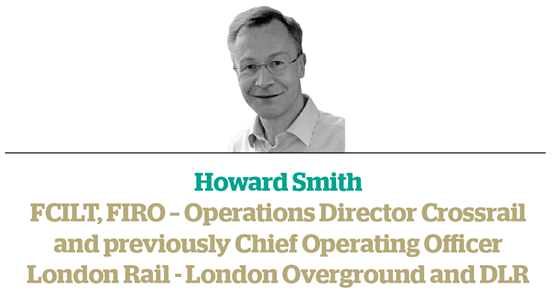
Richard’s excellent article touches on two key points: firstly, that technology is intermediated through economic, geographical and legal factors; and secondly, that new technologies rarely (if ever) sweep away entirely those that preceded them. In an international railway benchmarking group, we marvelled that while we have real-time train locations on Google and city maps, we also tweet, email and phone customers, and still post up and distribute timetables in time-honoured fashion.
The car, autonomous or not, still has the physical constraints that Richard details. Even with closer separation and zero emissions (at point of use), it’s not an efficient point-to-point people mover to match the 1,500 people in a modern commuter train.
Worldwide, a key driver of growth in rail has been the move not only from country to town, but also bigger and denser urban areas of the kind best suited to rail. The trend in urbanisation is set to continue, and the same ‘shared use’ dynamic that moves millennials from the Mondeo parked outside to shared vehicles (autonomous or otherwise), and to mobility as a service, may also make them more ready to embrace a lifestyle based largely on city living and public transport.
Railway systems and technologies adapt. The old radial routes are being joined by dedicated high speed, and by innovations such as the Docklands Light Railway (with its smaller trains, but viable with the more efficient operating model that automation and early CCTV allowed) and London Overground (a seven-day orbital service that links the city in a way that simply wasn’t possible before).
That’s not to suggest that autonomous vehicles do not have a very significant role to play in the future of transport, just that it will be different and possibly focused (at least in the first decade or two) on those economic and geographical areas - motorways, new towns and suburbs, freight movements rather than passenger - where the benefits are most easily realised.
Finally, let’s think about something that is, to me, a conundrum. We often see this debate in terms of new technology (in the form of autonomous vehicles) replacing trains. Isn’t the much smaller leap of imagination to envisage the same technologies used to make huge strides in terms of train control - as well as other attributes of the digital world?
The DLR and Vancouver’s Skytrain were revolutionary at the time, but used computing power that can these days be found in a dishwasher. Trains offer easy answers to the most challenging constraints on autonomous vehicles: a consistent and predictable infrastructure; a common set of rules; an overall system architect; clear legal accountabilities. So should we also ask what’s stopping a much more rapid development of the Digital Railway, or railways?
In the UK our current organisational model, with track authorities, operators, lessors, contractors and myriad others, has brought passenger growth and a keen focus on utilising every bit of spare capacity. But this makes it incredibly difficult to take a joined-up view when it comes to projects, especially those such as digital that bring long-term good, but with short term costs and impacts. At TfL we have tried to simplify this through a different model but in the meantime, Google Rail anyone...?
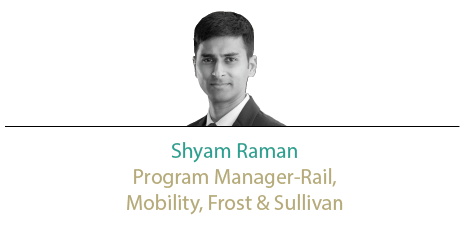
The integration of mobility is driving growth in all rail segments globally. Demand for improved efficiency in the rail industry will drive the market for advanced asset and fleet management tools, including remote diagnostics (or prognostics), passenger information and asset planning. Recent research has shown that intelligent solutions (such as rail automation) that help increase efficiency without compromising on safety are receiving dramatically high interest levels. The radio-based Communication-Based Train Control (CBTC, which allows metro and subway systems to operate driverless trains) network in western Europe is expected to grow at a CAGR of 22.8% over the next ten years, according to a recent Frost & Sullivan study.
Every transport mode is important and integral for providing seamless connectivity. Subways and heavy metro rail systems are available in city centres in urban areas.
Operating capacities of 70,000 to 120,000 passengers per hour per direction (p/h/d) are possible, with advances in signalling technologies eliminating the requirement for a driver. Light rail and guideway systems enable urban areas to have highly efficient mobility until the need for heavy metro solutions is warranted. PRT/ GRT/BRT systems have an ideal capacity of 10,000-15,000 p/h/d and can operate feeder routes to urban rail nodes for bridging the gap. Conventional buses can handle capacities in the range of 3,000-5,000 p/h/d. Car sharing, bike sharing, and other non-motorised transportation options emerge as being critical in delivering last-mile connectivity.
The Hyperloop is not the only radical transport solution currently in development. The Canadian firm Magnovate aims to commercialise a new Maglev system - ‘Magline’. Magline’s design speed will be 300 miles per hour on inter-city routes and up to 90mph in the urban setting. Magline vehicles are smaller, and similar to pod-type personal rapid transit vehicles. Magline further improves on system economics by utilising a ‘packet switching’ model that enables offline stops without slowing traffic on the main line. This allows more vehicles that are not connected to one another to run more often on the network.
A project is being developed to connect the cities of Edmonton and Calgary with a Magline track. The planned length will be just over 180 miles, and it is expected to cost $3.6 billion (£2.8bn). The current travel time of three hours by road and 1½ hours by air will be reduced to less than 45 minutes by Magline - a small vehicle on a small guideway with high-speed magnetic levitation achieved by using a revolutionary technology called stabilised permanent magnate suspension.
The rail research group at Frost & Sullivan finds that global high speed rail has enormous interest levels, with total expected investment funding in high speed rail infrastructure of more than $770.23bn (£601.3bn) by 2022, and more than $60bn (£46.8bn) expected in North America through California high speed rail.
There is a gradual transition in the way that information technology is being integrated in transportation systems. It is not only being implemented and enabling new technologies and applications in transportation, it is also becoming inherent and an integral element. It is expected that transit systems of the future will be a network that is sentient, self-sustaining and cognitive in nature. And rail systems will play the role of the central nervous systems in those networks.

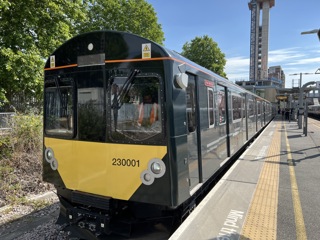
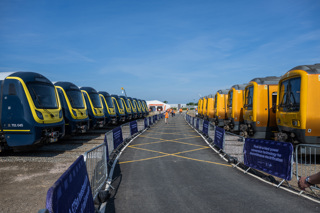
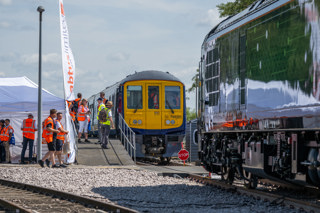
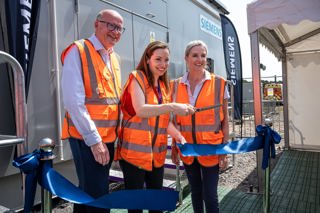
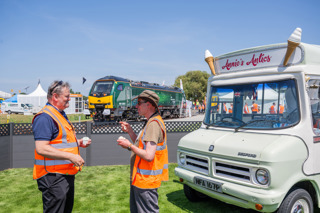











Login to comment
Comments
No comments have been made yet.